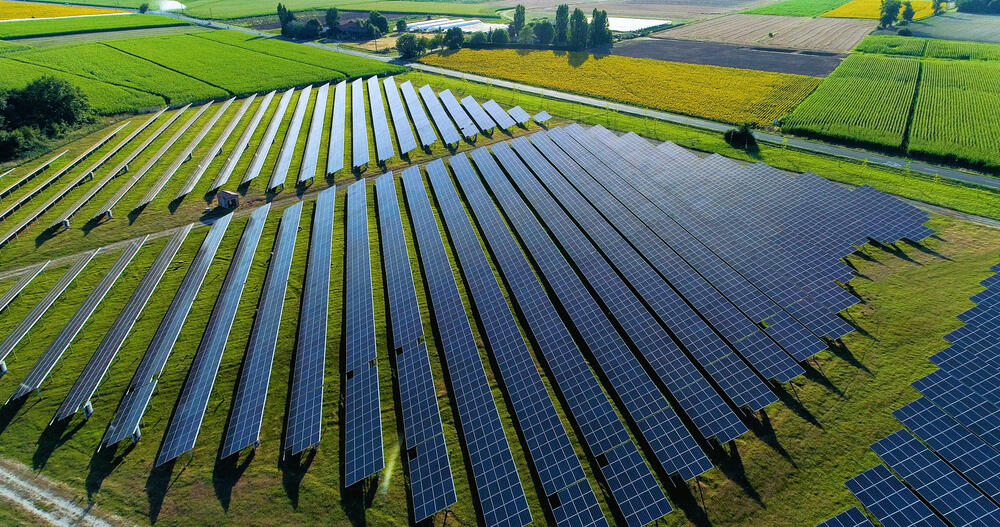DBU aktuell No. 5 | 2020 | English
Information on Grant Support Activities of the German Federal Environmental Foundation (Deutsche Bundesstiftung Umwelt)
1.) 10,000th DBU project combines species protection and energy system transformation
For almost 30 years, the DBU has been promoting innovative and environmentally friendly model projects. In June, the funding reached another milestone: 10,000 funded projects! Number 10,000 is the Evaluation System for an Environmentally Friendly and Landscape Compatible Energy Turnaround (EULE) - a project of Regionalwerke, Bodenkirchen, in cooperation with the Weihenstephan-Triesdorf University of Applied Sciences in Freising and Prof. Schaller UmweltConsult in Munich.
Producing energy and at the same time promoting biodiversity, that was the idea of environmental and energy manager Andreas Engl. For the manager, a solar field in the landscape is an ecosystem designed by humans, whose living components humans, plants and animals must be equally supplied by the factors soil, water and air and interact with each other. The outcome of this is an ecosystem with a diversity of species appropriate to the location. Engl used his own solar field as a test object when he framed it with orchard meadows, hedges, wetlands, nesting boxes and dry stone walls to achieve the greatest possible structural diversity. He found out that this area could be used for biodiversity and for energy production. "In a densely populated country like Germany, this is particularly important if we want to preserve nature and at the same time achieve the energy turnaround," said Engl.
"In order to be able to stop climate change and to achieve a sustainable supply of renewable energy in Germany and around the world, we need as many of these decentralized solar or wind farms as possible," said Dr. Volker Wachendörfer of the DBU Department for Nature Conservation. "The advantages of renewable energies for humans and nature are rarely discussed. In some cases, it comes to one-sided protests when solar parks or wind turbines are planned to build. In this way, nature conservation and renewable energies can be combined with each other".
This is where the project comes in. "For the first time, we want to evaluate the effects of renewable energy systems on people and nature and at the same time develop measures for improvement. The goal is to upgrade the relevant areas and to use them twice: for energy production and as a biotope for Germany's highly threatened biodiversity. This will give consumers a first insight into energy production and also enable them to make it more ecological according to their wishes, for an energy turnaround in harmony with nature," said Engl. The assessments focus on specific animal and plant species and biotope types whose occurrence provides reliable information about the quality of their environment. "So anyone who buys green electricity can protect nature at the same time. This is the big advantage compared to regular power plants. There is an additional benefit for society, which we want to capture, document and communicate using digital technologies," says Engl.
The tests are being conducted in Bavaria. Initially, the use of the system will be limited to the evaluation of solar fields. Customers of the Regionalwerke would pay a surcharge of one cent per kilowatt hour, with this money the certified plant operator could implement environmentally friendly measures. This system will also be offered to the local Stadtwerke for their marketing. Later, the process can be extended to other renewable energies such as wind power, hydroelectric power or biomass. The DBU supports the project technically and financially with 125,000 euros.
translated by DeepL


